Simon Costin: Designer, Folklorist, Engineer of the Fantastical
By Something CuratedInside the Magic Mind of London’s Most Surreal Set Designer
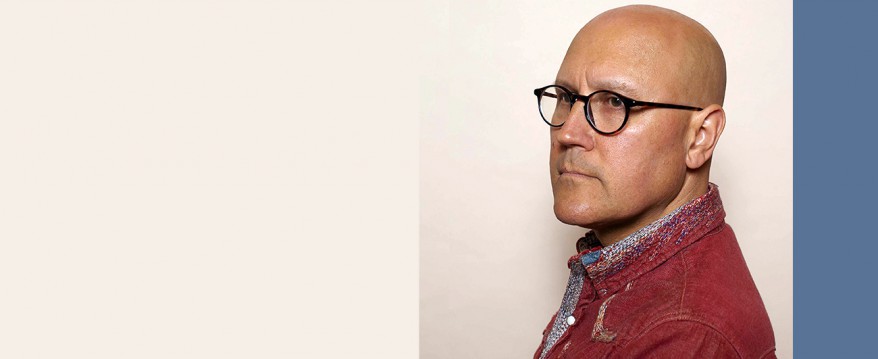
Simon Costin is a set designer, an artist, a jewelry-maker, a curator, a filmmaker and, most recently, a museum director. Born in London, he completed a BA in theatre design at Wimbledon School of the Arts, to which he credits his ability to work through both a creative and technical lens. From Hermes to H&M, Costin has deep and diverse ties within the fashion industry, including a long-term collaboration with Alexander McQueen which ran from the 90s until his death in 2010. He’s also designed sets and micro-worlds for shoots and shows alike, collaborating with photographers and designers like Tim Walker, Paolo Roversi, and Gareth Pugh, and created landscapes for Givenchy, Lanvin, and the like. Costin has both exhibited within and curated shows at leading cultural centres such as the ICA in London, the Metropolitan Museum of Art in New York, and the Galerie Patricia Dorfmann in Paris – and places off the grid, like a forest in Argyll.
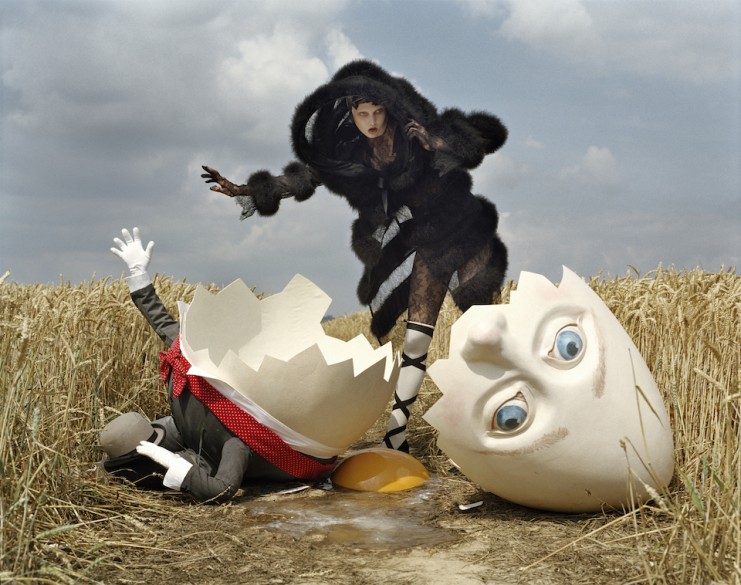
But his influence and interests span beyond the worlds of fashion and art: Costin has an intense interest in British cultural history, particularly the longstanding heritage of folklore that continues to pervade the country and his own practice. This obsession caused him to open a travelling museum of British Folklore in 2009, which found a semi-permanent nest in North Cornwall. Costin regards his interest in Folklore and his creative practice as distinct yet with a definite blurring of interests. And the ties are about to get a lot more intertwined, as Costin starts to design the displays for his Folklore museum.
It’s clear that his vision is led by an unquenchable curiosity that is tinged with fantasy and folkloric influences, plus the odd twist of surrealism. His interest in stories, storytelling, and British cultural heritage extends into a desire for opening up that knowledge to the rest of the world. Citing a lack of any previously existing institution that addresses the country’s inherited folklore tradition and makes it accessible to the general public, Costin founded the Museum of British Folklore. Through the museum, Costin intends to shine the spotlight on the significance of folkloric traditions to contemporary culture. The museum will consist of a collection of artefacts, photographs, films, oral histories, manuscripts and assorted ephemera, to be made available to the interested public and research institutions.
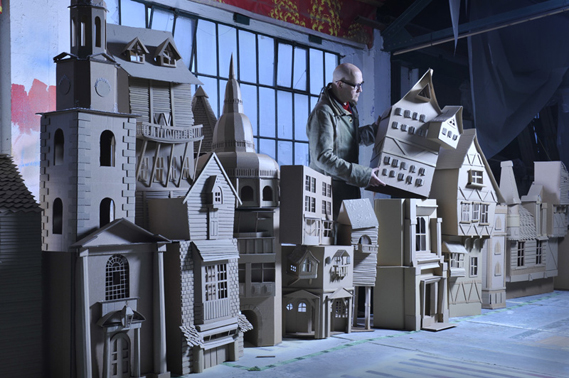
“Folklore is not only important from a cultural heritage perspective, but also brings real and tangible benefits to communities, including social cohesion, economic regeneration and both intercultural and intergenerational understanding.”
He’s also interested in critiquing the standards of fashion industry, and does so through collaborative project work with some of its finest. When Costin was still in art school, he was approached by Alex McQueen, who asked the young designer if he could use some jewelery Costin made in 1986 for McQueen’s own degree show. This contact turned into a seven year partnership wherein Costin designed catwalks McQueen’s shows. Later, Costin teamed up with Gareth Pugh to continue to question the meaning of the catwalk, putting pressure on conventional ideas of what the runway is or can do. In 2014 Costin brought these imaginary catwalks to life, within a commissioned exhibition at the Fashion Space Gallery titled Impossible Catwalk Shows, which featured exactly what it sounds like. With Gareth, Costin produced iconic alternative, experiential catwalks, like the inflatable catwalk, and 1998’s “Untitled” for McQueen’s S/S collection which featured golden light and indoor rainstorms, but many of the ideas that he dreamed up with both Gareth and McQueen simply could not be realized due to budgetary constrictions. It was also the condition of an industry generally hostile to breaking the boundaries of traditional catwalk aesthetics.
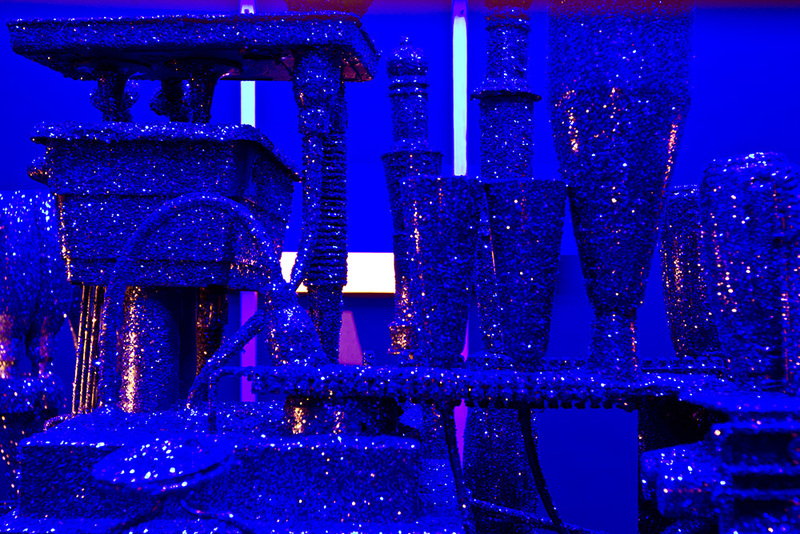
The show was commissioned and curated by Ligaya Salazar. It worked with the premise, “What could catwalks be, if possibility were limitless?” The show also included a moodboard from early planning days in Pugh’s runways and a sketchbook full of unrealized ideas: up until then. The exhibition featured runways reimagined as glittering nuclear plants and cardboard forests, plus an assemblage of Costin’s own notebooks, sketches, and mood boards that revealed the inner workings of set design and how it influences and defines the vision behind fashion collections.
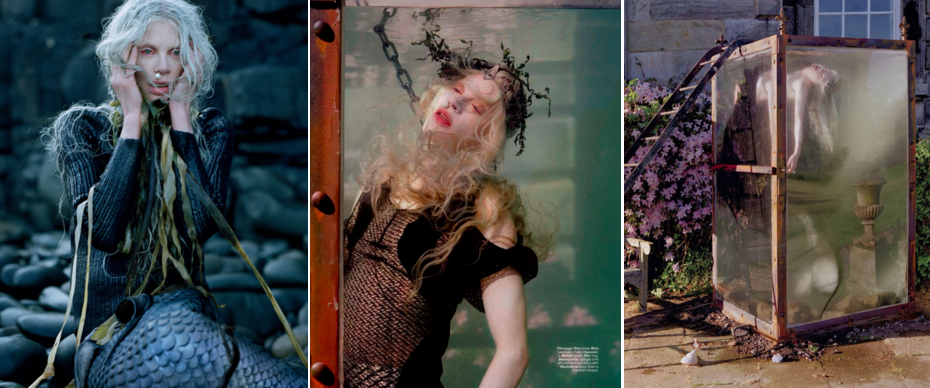
On the significance of folklore:
“Folklore is not only important from a cultural heritage perspective, but also brings real and tangible benefits to communities, including social cohesion, economic regeneration and both intercultural and intergenerational understanding. In decades past, folkloric traditions have often been overlooked, as we instead imported and embraced popular culture from around the world. We are now witnessing a renaissance however, an upsurge of interest in folklore through music, art and dance, and a growing trend and desire for people to reconnect with their communities, heritage and their environment at large.”
On the inflatable catwalk, the economy, and the need for innovative design:
“[The catwalk] is just a long piece of silk with a fan at the end and the models just had to ponystep to avoid getting tripped over. You don’t have to spend a lot of money just to give a nice visual impact to a presentation. Not enough people take the risk. I think everything’s become very safe recently, probably because of the economical situation, but that’s when you should be reacting surely?”